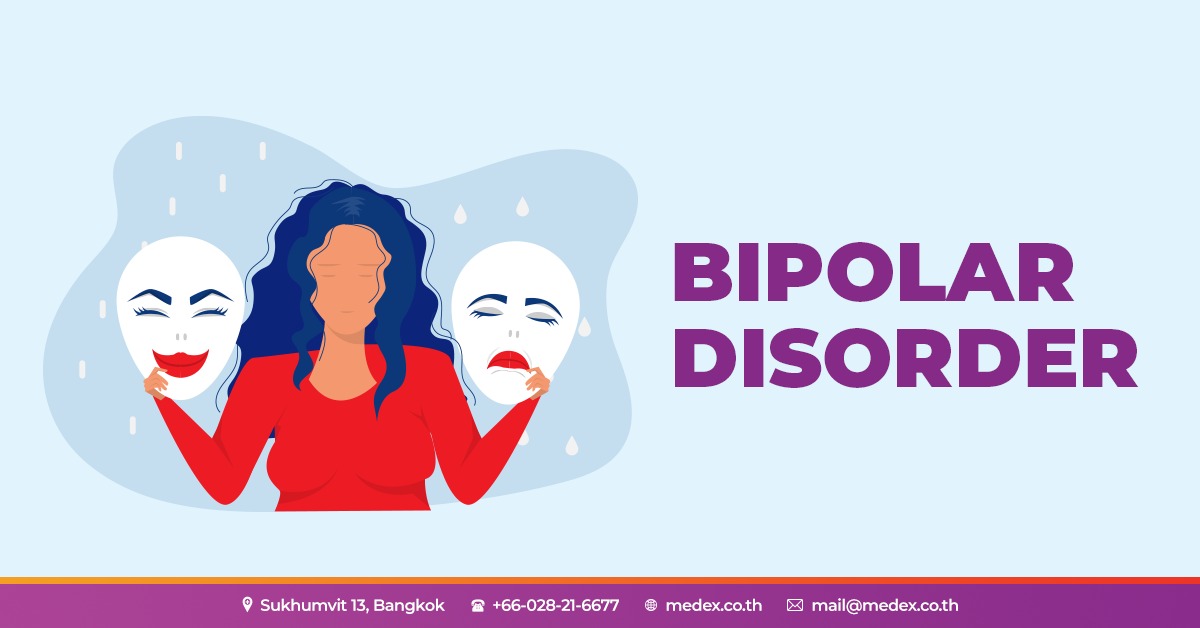
If you have bipolar disorder, let us say you are not alone. Bipolar is considered a barrier, but we can work around that barrier by creating an alternative route.
What is Bipolar Disorder?
Bipolar disorder can cause your temper to swing from an excessive high to an extreme low. “The Highs“ symptoms can encompass excitement, impulsive behavior, high energy, and agitation. ”The Lows“ signs and symptoms can include feeling worthless, lack of energy, low self-esteem, and suicidal thoughts. However, in between those periods, we usually feel normal. We can think of the highs and the lows as two “poles” of mood, which is why it is called “bipolar” disorder. Bipolar is such an illness that it typically gets to where we need to go. However, to keep away from the contamination, we need to take an alternative direction, even supposing the alternative approach is three times as long. Bipolar is considered a barrier but we can work around that barrier by creating an alternative route.
Bipolar disorder affects about 45 million people worldwide. Based on diagnostic interview data from the National comorbidity Survey Replication (NCS-R) in 2001-2003, it showed the generality of bipolar disorder among U.S adults aged 18 or older; an estimated 2.8% of U.S. adults had bipolar disorder in 2001-2003 it was similar for males (2.9%) and females (2.8%). Of adults with Bipolar Disorder, the degree of impairment ranged from moderate to severe. According to the data, an estimated 82.9% of people with bipolar disorder had a severe impairment, the highest percent serious impairment among mood disorders. An estimated 17.1% had moderate impairment.
According to the interview data from National Comorbidity Survey Adolescent Supplement (NCS-A), the prevalence of bipolar Disorder among U.S adolescents aged 13-18 is an estimated 2.9% had Bipolar disorder, and 2.6% had severe impairment. In addition, the diagnostic and Statistical Manual of Mental Disorders, Fourth Edition (DSM-IV) survey shows the prevalence of bipolar disorder among adolescents was higher for females (3.3%) than for males (2.6%).
Types
There are different types of bipolar and related disorders, including mania or hypomania and depression. The symptoms can cause unpredictable changes in mood and behavior that lead to significant suffering and difficulties in life.
Bipolar l Disorder:
The patient had at least one manic episode preceded by hypomanic or major depressive episodes. In some cases, the mania can trigger a break with reality (psychosis).
Bipolar II Disorder:
Here, the patient had at least one major depressive episode, at least one hypomanic episode, but never had a manic episode.
Cyclothymic Disorder:
Children and adolescents have had many periods of symptoms of hypomania and periods of depressive symptoms (though less severe than major depressive disorder) for at least two years or a year.
Other Types:
These include, for example, bipolar and related disorders caused by certain drugs or alcohol or due to Cushing’s disease, multiple sclerosis, or stroke.
Symptoms
Bipolar can cause your temper to swing from an excessive high to an extreme low. How severe it gets differs from person to person and can also change over time, becoming more or less painful.
Symptoms of mania (“the highs”):
* Excessive happiness, hopefulness, and excitement
* Sudden changes from being joyful to being irritable, angry, and hostile
* Restlessness
* Rapid speech and poor concentration
* Increased energy and less need for sleep
* Unusually high sex drive
* Making grand and unrealistic plans
* Showing poor judgment
* Drug and alcohol abuse
* Becoming more impulsive
* Less need for sleep
* Less of an appetite
* A larger sense of self-confidence and well-being
* Being easily distracted
During depressive periods (“the lows”), a person with bipolar disorder may have:
* Sadness
* Feelings of hopelessness or worthlessness
* Not enjoying things they once liked
* Trouble concentrating
* Forgetfulness
* Talking slowly
* Less of a sex drive
* Inability to feel pleasure
* Uncontrollable crying
* Trouble making decisions
* Irritability
* Insomnia
* Change in Appetite
* Thoughts of death or suicide
* Attempting suicide
Cause
There isn’t any specific cause for Bipolar disorder. However, researchers are analyzing how some elements might also additionally cause it in a few people. For example, occasionally, it can simply be genetics, which means you’ve got it as it runs in your family. In addition, the way your mind develops may also play a role; however, scientists aren’t sure how or why.
When a person develops bipolar, it typically starts in the past due to youth or younger adulthood. Rarely, it may occur earlier in childhood. Men and women are equally likely to get it. Women are pretty much more likely than men to go through “rapid cycling,” that’s having four or greater distinct mood episodes within a year. Women generally tend to spend greater time depressed than men with bipolar illness. A mixture of medical and mental issues is more common in women. Those medical problems can encompass thyroid disease, migraines, and anxiety disorders.
Bipolar Workaround
We can’t deny that bipolar disorder brick walls can sometimes get too high, too deep, and too long to beat, irrespective of how much you’re trying to defeat it. Unfortunately, few of us have come up against bipolar brick walls that are impassible. Nonetheless, determination and patience go a long way. To overcome the episode, try rethinking what’s going to make you truly happy and mentally stable.
Bipolar disorder is a severe mental illness that needs to be handled cautiously. A diagnosis of bipolar disorder is made by taking careful note of symptoms, and their severity, frequency, and length. The most telling signs involve highs or lows in mood, along with changes in sleep, energy, thinking, and behavior. If you or someone you know has symptoms of bipolar disorder, talk to your family doctor or a psychiatrist. The person will have to undergo a complete psychiatric evaluation to tell if they have likely bipolar disorder or another mental health condition. Nevertheless, talking to close friends and family can often help.



